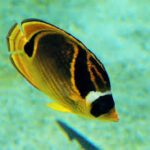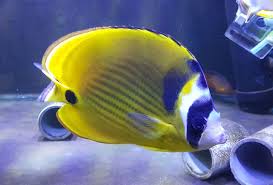
Rosa cymosa, while resilient and beautiful, is susceptible to various diseases that can affect its growth and overall health. Part 1 of this discourse examines the common ailments that afflict Rosa cymosa and offers insights into preventive measures to maintain the vigor and vitality of these beloved flowers.
### 1. Introduction to Diseases in Rosa cymosa
Rosa cymosa, like all plants, is susceptible to diseases caused by pathogens such as fungi, bacteria, viruses, and pests. These diseases can manifest as leaf spots, powdery mildew, rust, black spot, and other symptoms that affect the plant’s appearance, vigor, and productivity. Understanding the common diseases that affect Rosa cymosa is essential for effective disease management and prevention.
### 2. Common Diseases and Their Symptoms
#### Powdery Mildew (Podosphaera pannosa)
Powdery mildew is a fungal disease that appears as a white powdery coating on the leaves, stems, and buds of Rosa cymosa. It thrives in warm, humid conditions and can spread rapidly, causing leaves to become distorted, yellow, and eventually die. Severe infestations can weaken the plant and reduce flower production.
#### Black Spot (Diplocarpon rosae)
Black spot is a fungal disease characterized by black or dark brown spots on the leaves of Rosa cymosa. These spots may have a yellow halo and can coalesce to cover large areas of the leaf surface. Black spot weakens the plant by reducing its ability to photosynthesize, leading to defoliation and decreased vigor.
#### Rust (Phragmidium spp.)
Rust is a fungal disease that manifests as orange or rust-colored pustules on the undersides of Rosa cymosa leaves. These pustules release spores that spread the disease to nearby plants, causing yellowing, wilting, and premature leaf drop. Rust can weaken the plant and make it more susceptible to other diseases and environmental stresses.
#### Leaf Spot (Septoria spp.)
Leaf spot is a fungal disease that causes small, dark spots to form on the leaves of Rosa cymosa. These spots may have a yellow halo and can coalesce to form large lesions that cover the leaf surface. Leaf spot weakens the plant by reducing its ability to photosynthesize and can lead to defoliation if left untreated.
#### Aphid Infestation (Aphidoidea)
Aphids are small, soft-bodied insects that feed on the sap of Rosa cymosa leaves, stems, and buds. They reproduce rapidly and can quickly colonize plants, causing leaves to curl, yellow, and distort. Aphids also secrete honeydew, which attracts ants and promotes the growth of sooty mold, further compromising plant health.
### 3. Prevention and Management Strategies
#### Cultural Practices
– **Plant Selection:** Choose disease-resistant varieties of Rosa cymosa when planting to reduce the risk of disease.
– **Site Selection:** Plant Rosa cymosa in a location with good air circulation, sunlight, and well-drained soil to minimize the risk of fungal diseases.
– **Proper Pruning:** Prune Rosa cymosa plants regularly to remove dead or diseased branches and improve air circulation within the canopy.
– **Sanitation:** Remove fallen leaves, debris, and plant material from around Rosa cymosa plants to reduce the risk of disease spread.
#### Water Management
– **Avoid Overhead Watering:** Water Rosa cymosa plants at the base to minimize leaf wetness and reduce the risk of fungal diseases such as powdery mildew and black spot.
– **Watering Schedule:** Water Rosa cymosa plants in the morning to allow foliage to dry quickly and reduce the risk of fungal diseases.
#### Pest Management
– **Monitor for Pests:** Inspect Rosa cymosa plants regularly for signs of aphid infestation and other pests.
– **Natural Predators:** Encourage natural predators such as ladybugs, lacewings, and parasitic wasps to control aphid populations naturally.
– **Horticultural Oils and Insecticidal Soaps:** Use horticultural oils and insecticidal soaps to control aphids and other soft-bodied insects on Rosa cymosa plants.
#### Fungicide Applications
– **Preventive Treatments:** Apply fungicides preventively to Rosa cymosa plants during periods of high disease pressure, such as in spring and early summer.
– **Fungicide Rotation:** Rotate between different classes of fungicides to reduce the risk of fungicide resistance and ensure effective disease control.
### 4. Conclusion
Understanding the common diseases that affect Rosa cymosa and implementing preventive measures are essential for maintaining the health and vitality of these beloved flowers. Part 1 of this discussion has provided insights into the symptoms of powdery mildew, black spot, rust, leaf spot, and aphid infestation, as well as preventive strategies such as cultural practices, water management, pest management, and fungicide applications. In Part 2, we will delve deeper into integrated pest management strategies and organic disease control methods to help gardeners and growers protect their Rosa cymosa plants from diseases and pests.
**Common Diseases in Rosa cymosa and Prevention Measures: Part 2**
Continuing from Part 1, we delve deeper into the management and prevention of common diseases that affect Rosa cymosa. Understanding the complexities of disease management and implementing effective preventive measures are crucial for maintaining the health and beauty of these cherished flowers.
### 5. Integrated Pest Management Strategies
#### Biological Control
Biological control involves the use of natural enemies, such as predators, parasites, and pathogens, to control pest populations and reduce their impact on Rosa cymosa plants. Ladybugs, lacewings, and predatory mites are examples of beneficial insects that feed on aphids and other soft-bodied pests, helping to keep their populations in check.
#### Cultural Controls
Cultural controls aim to create an environment that is less conducive to pest infestations by modifying planting practices, irrigation methods, and habitat conditions. Practices such as crop rotation, intercropping, and companion planting can disrupt pest life cycles, reduce pest populations, and improve overall plant health.
#### Physical Barriers
Physical barriers such as row covers, screens, and barriers can be used to protect Rosa cymosa plants from pest infestations. These barriers prevent pests from accessing plants and laying eggs, reducing the need for chemical pesticides and minimizing environmental impacts.
### 6. Organic Disease Control Methods
#### Neem Oil
Neem oil is a natural botanical insecticide and fungicide derived from the seeds of the neem tree (Azadirachta indica). It acts as a repellent, antifeedant, and growth regulator, disrupting the life cycle of pests and pathogens and reducing their ability to reproduce and spread.
#### Copper-based Fungicides
Copper-based fungicides, such as copper sulfate and copper hydroxide, are commonly used in organic agriculture to control fungal diseases such as powdery mildew, black spot, and rust. Copper ions disrupt fungal cell membranes, inhibiting spore germination and mycelial growth, and preventing infection of Rosa cymosa plants.
#### Sulfur Dust
Sulfur dust is a natural fungicide and miticide that has been used for centuries to control powdery mildew, rust, and other fungal diseases in plants. Sulfur particles penetrate fungal cells and interfere with metabolic processes, inhibiting spore germination and fungal growth, and reducing disease severity on Rosa cymosa plants.
### 7. Environmental Controls
#### Proper Planting Practices
Proper planting practices, such as spacing plants appropriately, providing adequate sunlight and air circulation, and avoiding overcrowding, can help reduce the risk of disease by creating a less favorable environment for pathogens to thrive.
#### Soil Health Management
Maintaining soil health through practices such as mulching, composting, and organic fertilization can improve the vigor and resilience of Rosa cymosa plants, making them less susceptible to disease and stress.
#### Irrigation Management
Proper irrigation management, including watering plants at the base, avoiding overhead irrigation, and using drip irrigation or soaker hoses, can help minimize leaf wetness and reduce the risk of fungal diseases such as powdery mildew and black spot.
### 8. Disease Monitoring and Early Detection
Regular monitoring of Rosa cymosa plants for signs of disease, such as leaf spots, powdery mildew, and pest infestations, is essential for early detection and prompt intervention. Early detection allows for timely treatment and management strategies to prevent the spread of disease and minimize damage to plants.
### 9. Conclusion
Implementing integrated pest management strategies and organic disease control methods is essential for managing common diseases that affect Rosa cymosa and maintaining the health and beauty of these cherished flowers. Part 2 of this discussion has provided insights into biological control, cultural controls, physical barriers, organic fungicides, environmental controls, and disease monitoring and early detection as effective strategies for preventing and managing diseases in Rosa cymosa. By adopting proactive and sustainable practices, gardeners and growers can protect their Rosa cymosa plants from diseases and pests and ensure their long-term vitality and resilience.










